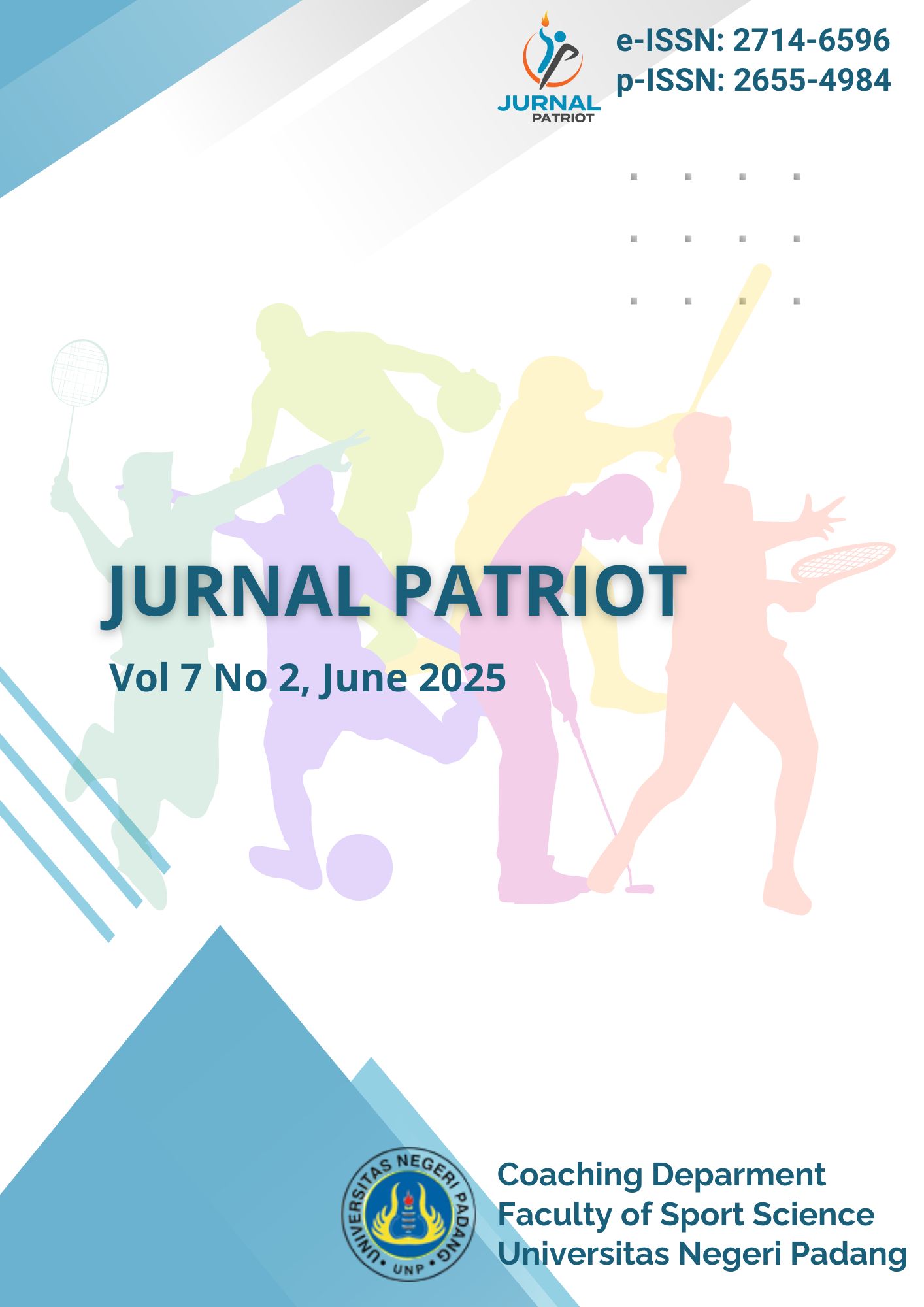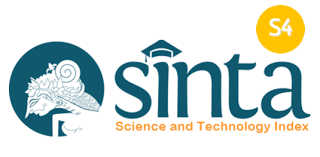Analysis of mood levels in cricket athletes during the training phase based on gender
Abstract
Problems: Mood significantly influences athletic performance, particularly in cricket, where monotonous and repetitive training can negatively affect athletes’ moods, reduce motivation, and ultimately impair on-field performance. Negative moods are not only detrimental to individual athletes but can also spread among teammates, amplifying their impact. Purpose: This study aimed to examine differences in mood levels between male and female cricket athletes during training, focusing on how gender may influence emotional responses in this context. Methods: This research utilized the Brunel Mood States (BRUMS) questionnaire, which was administered to the sample participants just once. Data analysis for the study was conducted using a t-test in SPSS version 25. Results: The results indicated significant differences in mood levels between male and female cricket athletes. Specifically, there were considerable disparities in negative mood states, such as tension, depression, anger, fatigue, and confusion, between the two groups during the training phase. Despite these differences, both male and female athletes exhibited an "iceberg personality" pattern, with vigor being the dominant mood indicator. Conclusion: The study concludes that the mood levels of male and female cricket athletes vary during training, highlighting the importance of a holistic approach that takes into account competitive pressures on male and female team to enhance performance through better management of mood states.
Downloads
References
Aquino, M. D., Jolo, M. U., Michael, J., Aquino, D., & Ulysses, M. (2024). Journal Sport Area Holistic coaching style on personal attributes and proficiency of volleyball athletes. 9(3), 340–356.
Do Bonfim, B. M. A., Bonuzzi, G. M. G., Monteiro, C. B. de M., & Meira Junior, C. de M. (2023). Could the profile of mood states predict performance in training and competition of professional goalball athletes? Human Movement, 24(4), 72–79. https://doi.org/10.5114/hm.2023.132709
Grewal, S., Theijse, R. T., Dunlop, G., van Deurzen, D. F. P., van den Bekerom, M. P. J., Klautz, R. J. M., Lefebvre, R. P., Munsami, D., & Grewal, N. (2024). Exploring the impact of sleep on emotional and physical well-being in professional cricketers: a cohort study over an in-season training period. Frontiers in Sports and Active Living, 6(June), 2–8. https://doi.org/10.3389/fspor.2024.1389565
Haq, I. N., & Kumaat, N. A. (2024). Mood States (POMS) Condition Profile Analysis of Senior Women’s Cricket Athletes in East Java before The North Aceh Sumatra PON 2024. International Journal of Current Science Research and Review, 07(01), 574–580. https://doi.org/10.47191/ijcsrr/v7-i1-54
Hasan, M. M., & Khan, M. H. A. (2022). Bangla version of the Brunel Mood Scale (BRUMS): validity, measurement invariance and normative data in non-clinical sample. Heliyon, 8(6), e09666. https://doi.org/10.1016/j.heliyon.2022.e09666
Ika Puji Rahayu, Indra Himawan Susanto, Pudjijuniarto Pudjijuniarto, & Soni Sulistyarto. (2024). Analisis Hubungan Antara Mood Atlet Dengan Tingkat Keberhasilan Snatch Pada Atlet Angkat Besi PABSI JATIM Surabaya. Observasi : Jurnal Publikasi Ilmu Psikologi, 2(3), 63–77. https://doi.org/10.61132/observasi.v2i3.459
Kemarat, S., Theanthong, A., Yeemin, W., & Suwankan, S. (2022). Personality characteristics and competitive anxiety in individual and team athletes. PLoS ONE, 17(1 January 2022), 1–9. https://doi.org/10.1371/journal.pone.0262486
Mondal, A. (2019). The effect of relaxation technique on batting performance in cricket. Human Movement and Sports Sciences, 4(1), 1531–1534. www.theyogicjournal.com
Musyarofah, A., Komarudin, K., Saputra, M. Y., & Novian, G. (2024). Correlation between Self-Talk and Emotional Regulation Among Student Volleyball Athletes. Indonesian Journal of Physical Education and Sport Science, 4(2), 212–219. https://doi.org/10.52188/ijpess.v4i2.721
Olayiwola, Z. A., Popoola, F. F., Agwasim, S. N., & Akin, D. (2024). Gender differences in sports performance across hockey , soccer , and basketball among athletes in South-West Nigeria.
Parsons-Smith, R. L., Barkase, S., Lovell, G. P., Vleck, V., & Terry, P. C. (2022). Mood profiles of amateur triathletes: Implications for mental health and performance. Frontiers in Psychology, 13(November), 1–14. https://doi.org/10.3389/fpsyg.2022.925992
Parsons-Smith, R. L., Terry, P. C., & Machin, M. A. (2017). Identification and description of novel mood profile clusters. Frontiers in Psychology, 8(NOV), 1–13. https://doi.org/10.3389/fpsyg.2017.01958
Poucher, Z. A., Tamminen, K. A., & Kerr, G. (2018). Providing social support to female Olympic athletes. Journal of Sport and Exercise Psychology, 40(4), 217–228. https://doi.org/10.1123/jsep.2018-0008
Providência, B., & Margolis Ribeiro, I. (2021). The BRUMS Method and Emotional Design: Profile of the Mood States of Undergraduate Students in Higher Education TSSiPRO-Technologies for Sustainable and Smart Innovative Products View project Iara Margolis Ribeiro The BRUMS Method and Emotional Design: Pr. November 2021. https://www.researchgate.net/publication/358562426
Rahman, R., Kusmaedi, N., & Komarudin, K. (2019). Corelation Between Emotional Intelligenceand Self-Efficacy With Mastery of Kayak Roll Slalom Technique. JUARA : Jurnal Olahraga, 4(2), 229. https://doi.org/10.33222/juara.v4i2.628
Ríos-Garit, J., Cañizares-Hernández, M., Reyes-Bossio, M., Pérez-Surita, Y., & Touset-Riverí, R. (2024). Competitive Anxiety and Mood States in High-Performance Cuban Student Athletes. Psychology in Russia: State of the Art, 17(3), 50–62. https://doi.org/10.11621/pir.2024.0304
Scanlan, A. T., Berkelmans, D. M., Vickery, W. M., & Kean, C. O. (2016). A review of the internal and external physiological demands associated with batting in cricket. International Journal of Sports Physiology and Performance, 11(8), 987–997. https://doi.org/10.1123/ijspp.2016-0169
Selmi, O., Ouergui, I., Muscella, A., Levitt, D. E., Suzuki, K., & Bouassida, A. (2023). Monitoring mood state to improve performance in soccer players: A brief review. Frontiers in Psychology, 14(February), 1–11. https://doi.org/10.3389/fpsyg.2023.1095238
Singh, S., & Singh, H. (2019). A comparative study of stress among college athletes with regard to gender. ~ 2266 ~ International Journal of Physiology, 4(1), 2266–2268. www.journalofsports.com
Terry, P. C., & Parsons-Smith, R. L. (2021). Mood profiling for sustainable mental health among athletes. Sustainability (Switzerland), 13(11), 1–21. https://doi.org/10.3390/su13116116
Thurlow, F., Huynh, M., Townshend, A., McLaren, S. J., James, L. P., Taylor, J. M., Weston, M., & Weakley, J. (2024). The Effects of Repeated-Sprint Training on Physical Fitness and Physiological Adaptation in Athletes: A Systematic Review and Meta-Analysis. Sports Medicine, 54(4), 953–974. https://doi.org/10.1007/s40279-023-01959-1
Veness, D. (2016). The Acute Effects of Mental Fatigue on Cricket-Specific Performance. 1–41.
Copyright (c) 2025 Jurnal Patriot

This work is licensed under a Creative Commons Attribution-ShareAlike 4.0 International License.



_(700_x_400_mm)_(3)_.png)


_(700_x_400_mm)_1.png)



